The Top Source of Hearing Aids in Wilmington, NC
Whether your doctor told you at a medical exam that you need hearing aids or you just got the results of a hearing test, your hearing health should be one of your top priorities. Hearing Aid Studio is proud to provide the best selection, technology, and pricing options for hearing aids in Wilmington, NC. Our experts are devoted to helping our customers hear more clearly!
What Types of Hearing Aids Are Available?
The days of bulky hearing aids that fit uncomfortably in the outer ear are long gone. At Hearing Aid Studio, we offer Wilmington’s largest selection of hearing care technology. We’ll work with you to find the best hearing aids for your unique needs. The right hearing aid for you may vary based on your activity level, your degree of manual dexterity, and the nature of your hearing loss.
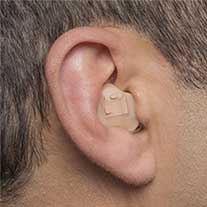
In-the-Ear (ITE)
In-the-ear (ITE) hearing aids are what many people think of when they hear the phrase “hearing aid.” We custom mold ITEs to sit inside your ear.
The large size of ITE hearing aids gives them some advantages. First, they are very easy to insert and remove, even if you have reduced dexterity in your hands. Second, they can support more advanced features, such as wireless connectivity.
ITE hearing aids are suitable for people with any degree of hearing loss.
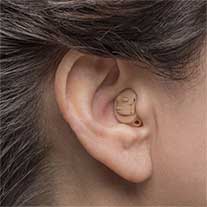
In-the-Canal (ITC)
In-the-Canal (ITC) custom-fit hearing aids fill your entire ear canal. They work smoothly with other technology (such as telephones), and they are quite discreet. ITC hearing aids are common among people with mild to moderate hearing loss.

Invisible In-the-Canal (IIC)
As their name suggests, Invisible In-the-Canal (IIC) hearing aids are the smallest, most discreet option on the market. It’s not just their compact size that makes them popular, however. Because the inner ear protects them from wind, they’re less likely to pick up wind noise and make whistling feedback sounds.
IIC hearing aids styles are suitable for people with mild hearing loss.
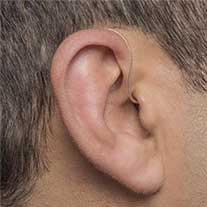
Receiver-in-Canal (RIC)
By placing just the receiver in the ear canal, Receiver-in-Canal (RIC) hearing aids make it possible for natural and amplified sounds to combine inside your ear. These hearing aids connect the receiver with a small earpiece that sits behind your ear.
This type of hearing aids styles are suitable for people who have mild to severe hearing loss
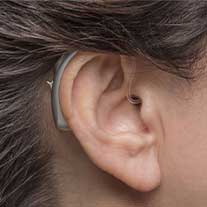
Behind-the-Ear (BTE)
Behind-the-Ear (BTE) hearing aids also have a small receiver, but their earpiece is much easier to manipulate, making them possible for more people to use. The earpiece sits behind your ear much as a wireless headset does. This hearing aids styles protect them from moisture and other hazards, and BTE hearing aids are suitable for all degrees of hearing loss.
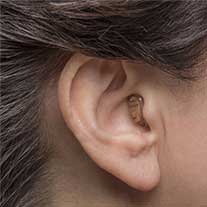
Completely-in-Canal (CIC)
Because they fit entirely in the ear canal, Completely-in-Canal (CIC) hearing aids are a popular choice among people with perceived mild to moderate hearing loss. While people can still see them if they look very closely, they are nearly invisible from most angles.
Advanced Technology for Improved Sound Quality
One of the first questions any audiologist will ask you is what you want your hearing aids to do. While the first and most obvious answer to that question is “help me hear things,” modern technology has opened a lot of doors in this regard.
Digital and dynamic noise reduction are a benefit of modern technology for hearing health. Some hearing aids come with directional microphones that you can adjust based on your needs or artificial intelligence that detects and enhances the most important sounds.
Bluetooth and other wireless technology allow you to not only connect your hearing aids directly to your phone but also use an app to adjust their settings. Bluetooth allows you to use your phone hands-free (without using the speakerphone). Some models will also transmit sound from other devices, such as TV or a computer, directly into your ears. Some brands even allow your audiologist to adjust your hearing aids without an office visit!
